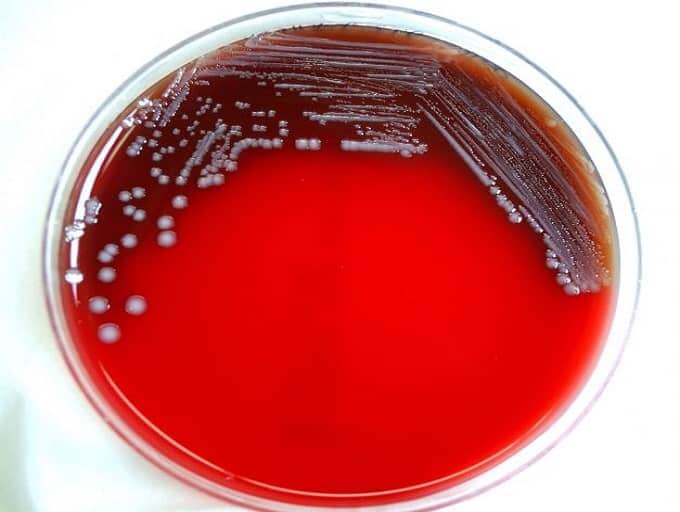MORPHOLOGY OF YERSINIA PESTIS (Y. PESTIS)
Shape – Yersinia pestis is a short, plump, ovoid, rod shape (bacillus) bacterium with rounded ends and convex sides.
Size – The size of Y. pestis is about 1.5 mm × 0.7 mm (micrometer).
Arrangement Of Cells – Yersinia pestis is arranged singly, in pairs or in groups.
Motility – Y. pestis is a motile bacterium when in the host body but is non – motile when isolated in the laboratory.
Flagella – Yersinia pestis is a flagellated bacterium with a peritrichous flagella arrangement.
Spores – The Yersinia pestis is a non–sporing bacterium.
Capsule – The Y. pestis is surrounded by a slime layer which may be a capsule or an envelope that can easily be demonstrated using India ink preparation, appear as a clear halo in a dark background.
Gram Staining Reaction – Yersinia pestis is a Gram -ve (Negative) bacterium.
In the microscopic view of Giemsa or Methylene blue-stained smear, shows bipolar staining (safety pin-like appearance) with the two ends densely stained and a clear central area. Also, pleomorphism is quite common in Yersinia pestis and in old cultures, involution forms are commonly seen (like Coccoid, club-shaped, filamentous & Giant form).
CULTURE REQUIREMENTS OF YERSINIA PESTIS (Y. PESTIS)
⇒ Special requirements – Yersinia pestis or Y. pestis has no complex nutritional requirements and readily grow in ordinary media like Nutrient Agar medium (NAM). Commonly the NAM & Blood Agar medium is used for the cultivation of Yersinia pestis in the Laboratory.
⇒ Optimum temperature – The temperature for the growth of Yersinia pestis ranges from 2–45°C but the optimum temperature for the cultivation in the laboratory is 27°C and usually cultivated at this temperature in laboratories. However, the envelope develops best at 37° C.
⇒ Optimum pH – Y. pestis can survive at 5.0–9.6 pH but the maximum growth observed at 7.2. Also, the pH requirement varies as per the strain of Yersinia pestis.
⇒ Oxygen requirements – Yersinia pestis (Y. pestis) is an aerobic bacterium i.e. grow best in the presence of oxygen and it is also a Facultative anaerobic organism i.e. can grow in the low oxygen environment.
Check out the Morphology & Culture Characteristics of Pseudomonas aeruginosa
MORPHOLOGY AND CULTURE CHARACTERISTICS OF PSEUDOMONAS AERUGINOSA (P. AERUGUNOSA)
⇒ There are various culture media used for the cultivation of Yersinia pestis (Y. pestis) in the laboratory and most commonly the Nutrient Agar medium and Blood Agar medium is used, the other media are as follows –
- Columbia Horse Blood Agar medium
- Trypticase Soy Agar medium
- MacConkey Agar medium
- Oil or Ghee Broth
- The liquid medium (Nutrient Broth medium, TSB medium, etc.).
The oil or Ghee (Clarified butter) broth is particularly used for the cultivation of Yersinia pestis in the laboratory due to its characteristic growth that occurs in ghee broth. The ghee broth can easily be prepared by adding the Ghee or oil in the Flask or Test tube containing broth medium. It will float on the medium due to its low density.
CULTURE CHARACTERISTICS OF YERSINIA PESTIS (Y. PESTIS)
| Cultural Characteristics | Nutrient Agar Medium (NAM) | MacConkey Agar medium | Blood Agar Medium |
|---|---|---|---|
| Shape | Circular | Circular | Circular |
| Size | 1-2 mm | 1-2 mm | 1-2 mm |
| Elevation | Low Convex | Low Convex | Low Convex |
| Surface | Smooth ; mucoid (capsulated) | Smooth ; mucoid (capsulated) | Smooth ; mucoid (capsulated) |
| Color | Colorless – Greyish white | Colorless | Greyish white |
| Structure | Transparent – Opaque | Transparent | Translucent –Opaque |
| Hemolysis | ----- | ----- | γ-Hemolysis (Non - Hemolytic) |
In liquid culture media like Trypticase soy broth or Nutrient broth, a flocculent growth of the bacterium occurs at the bottom along with the sides of the tube or flask (whatever is used) with a little or no turbidity throughout the solution, which is further analyzed for the morphology (under the microscope), gram reaction, biochemical tests, and Yersinia pestis-specific tests.
Check out the Morphology & Culture Characteristics of Neisseria gonorrhoeae
MORPHOLOGY AND CULTURE CHARACTERISTICS OF NEISSERIA GONORRHOEAE (GONOCOCCUS OR GONOCOCCI)
In Blood Agar medium, some of the strains show Gamma hemolysis i.e. no hemolysis occurs on blood agar medium but the colonies are brown-colored due to the absorption of the hemin pigment.

In MacConkey Agar medium, the colonies of Yersinia pestis are colorless due to the lack of lactose fermentation which is of great importance in differentiating Y. pestis from other Bacteria that may present in the specimen, especially from Gram-positive bacteria and E. coli & Klebsiella species which are lactose fermentors and gives Pink colored colonies on MacConkey agar medium.

In Ghee or Oil Broth medium, the oil floats on the top of the broth so a Characteristics growth of the organism occurs as it hangs down into the broth from the surface of the broth resembling the stalactite and popularly known as Stalactite growth.

That’s all about the Morphology & Culture Characteristics of Yersinia pestis
Further Reading:
Presentation on Yersinia pestis – Uconn
Yersinia, Pasturella, Francisella – Slideshare
Yersinia pestis on MacConkey Agar – Pixnio
Yersinia pestis on Blood Agar – Pixnio

Hi, I’m the Founder and Developer of Paramedics World, a blog truly devoted to Paramedics. I am a Medical Lab Tech, a Web Developer and Bibliophiliac. My greatest hobby is to teach and motivate other peoples to do whatever they wanna do in life.